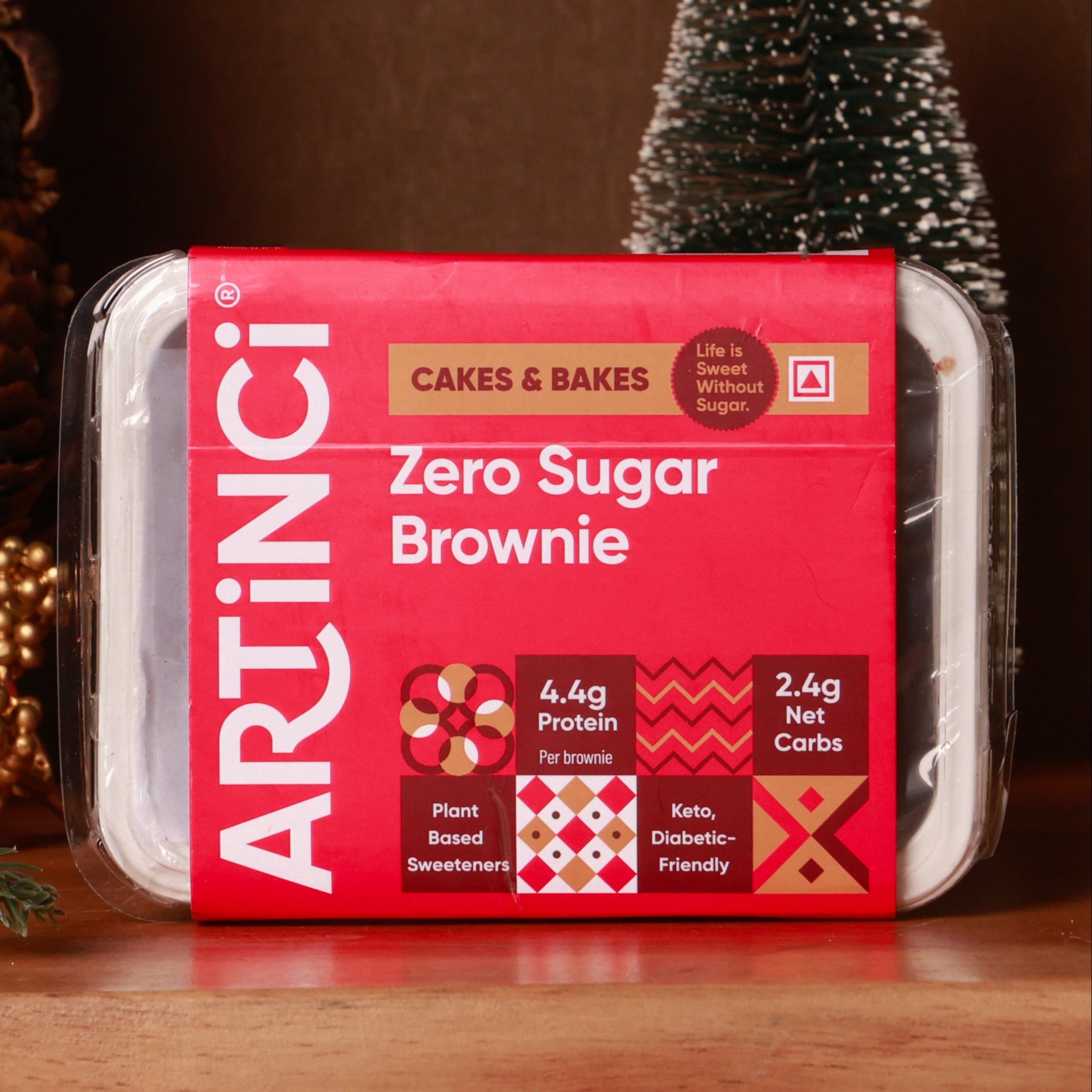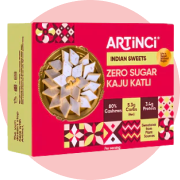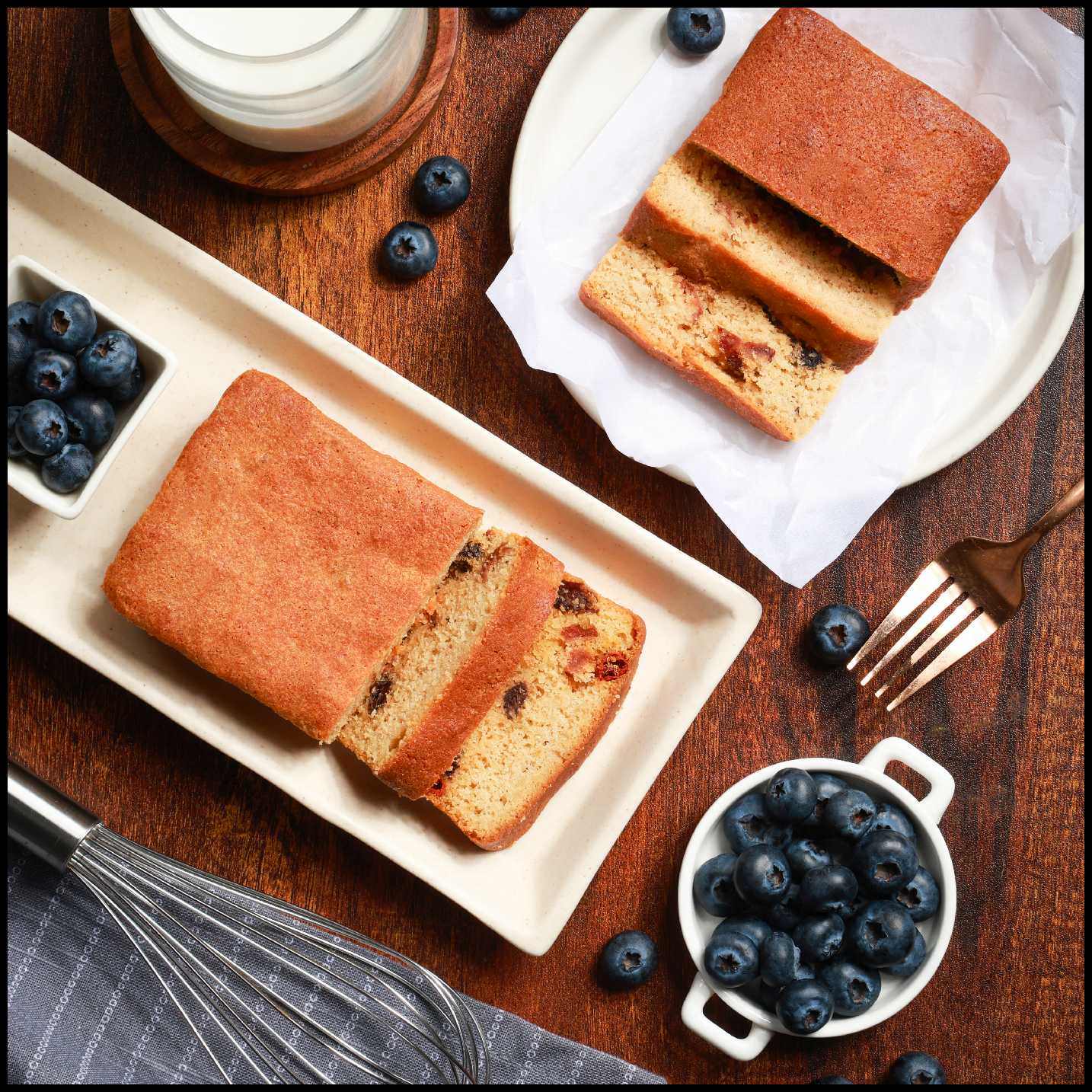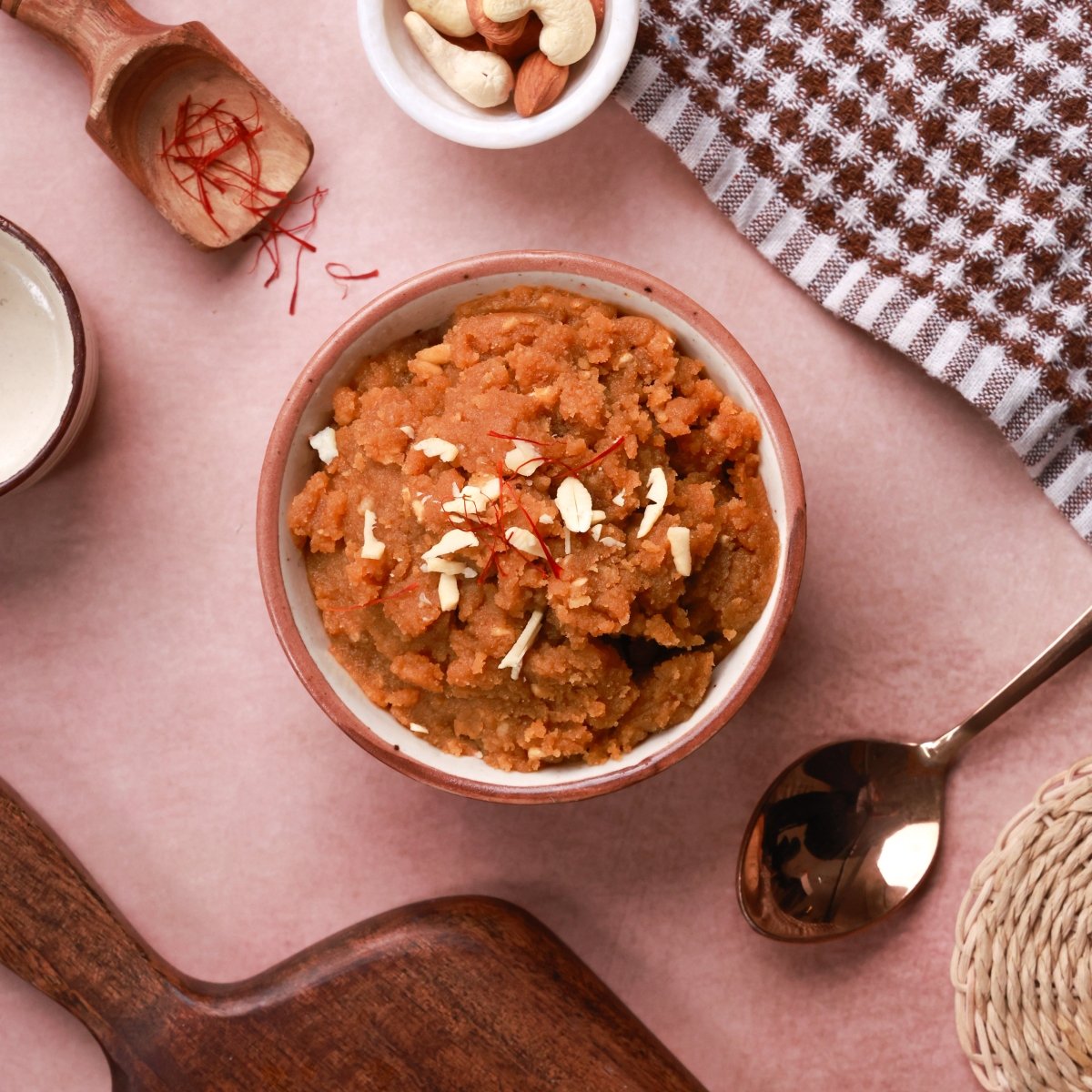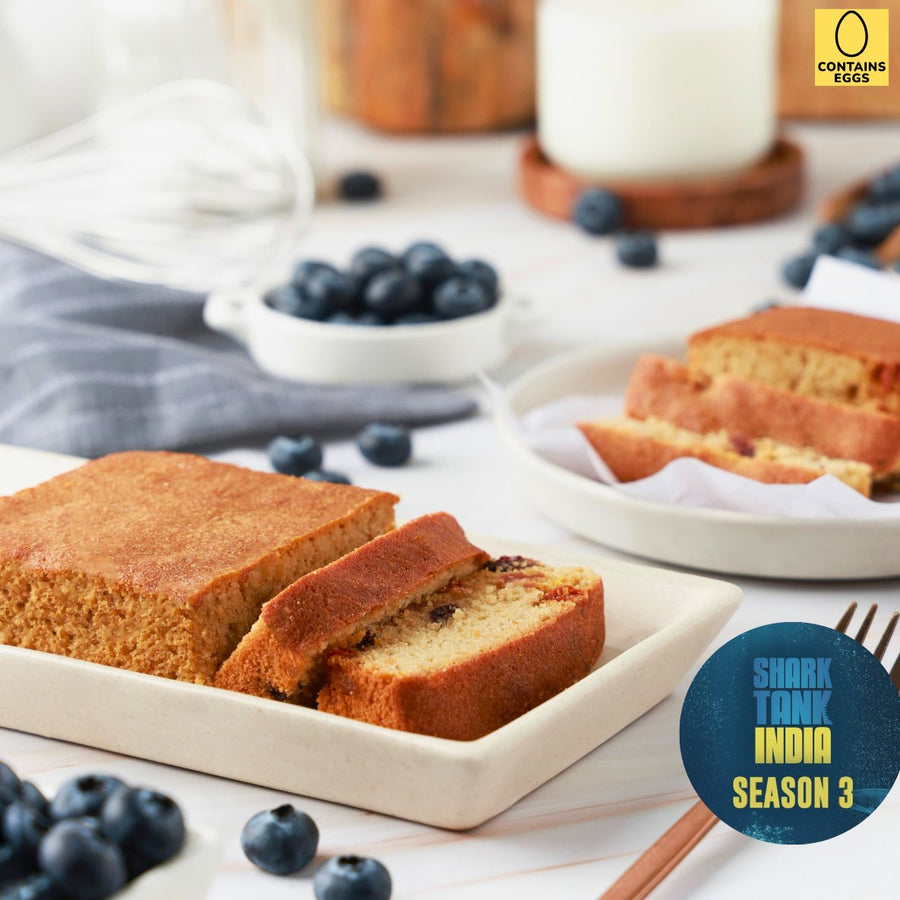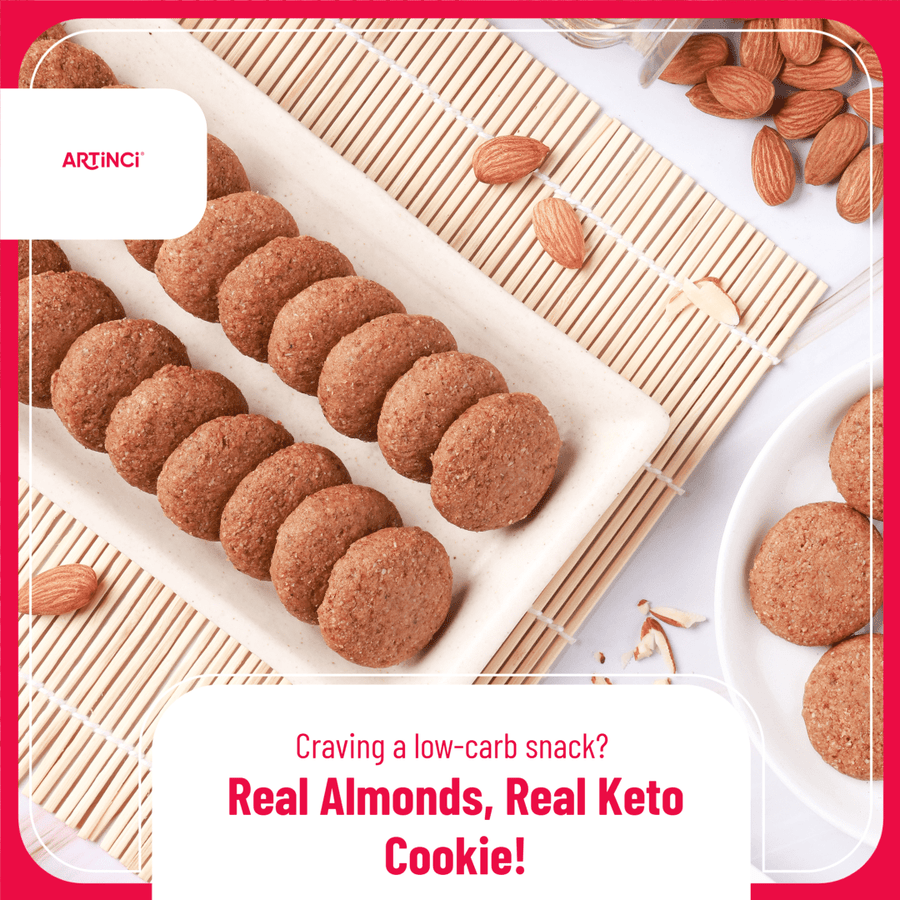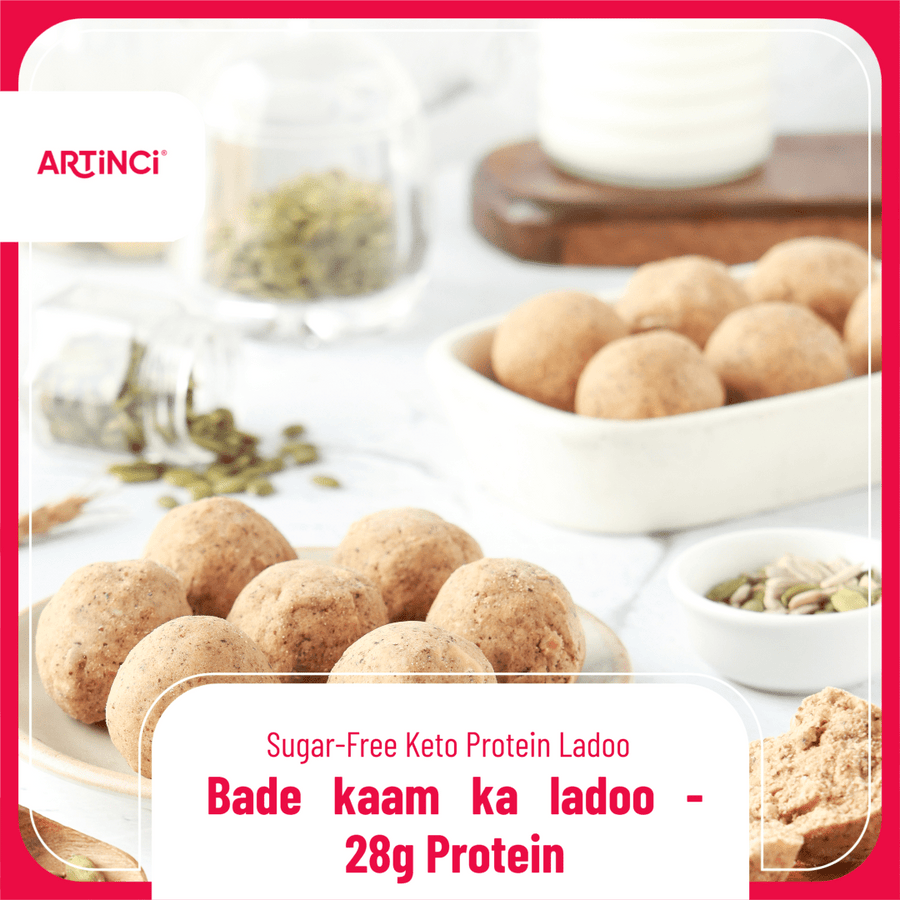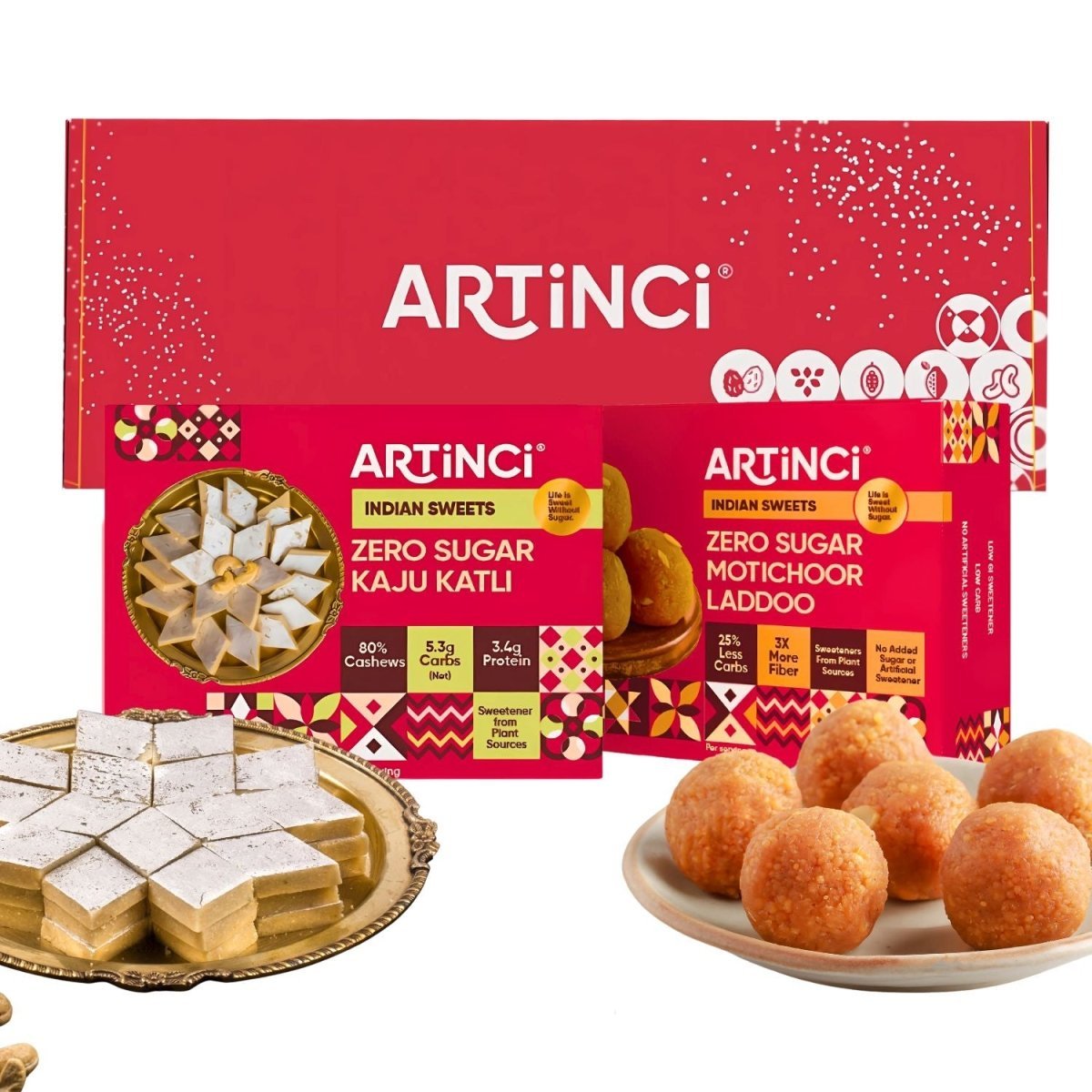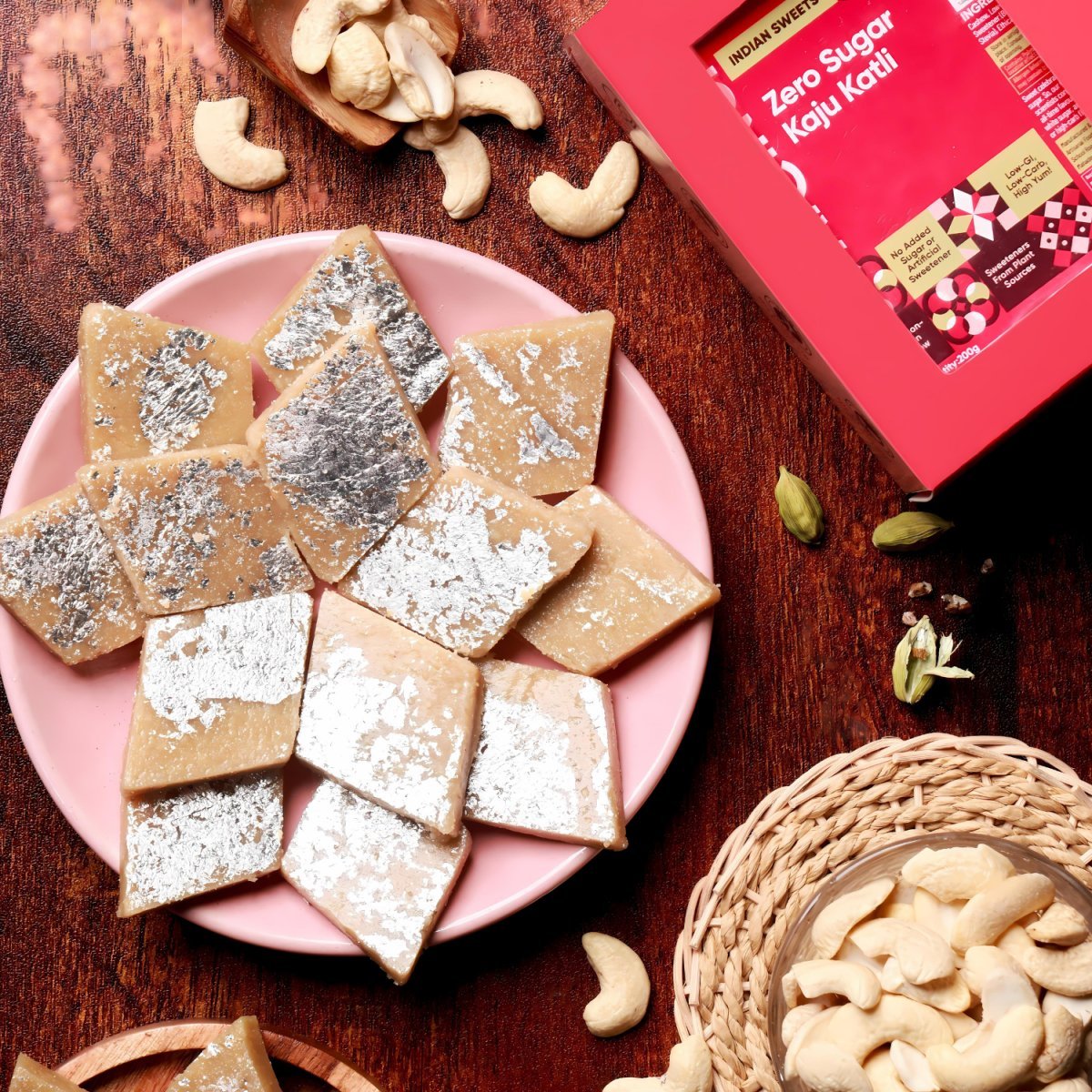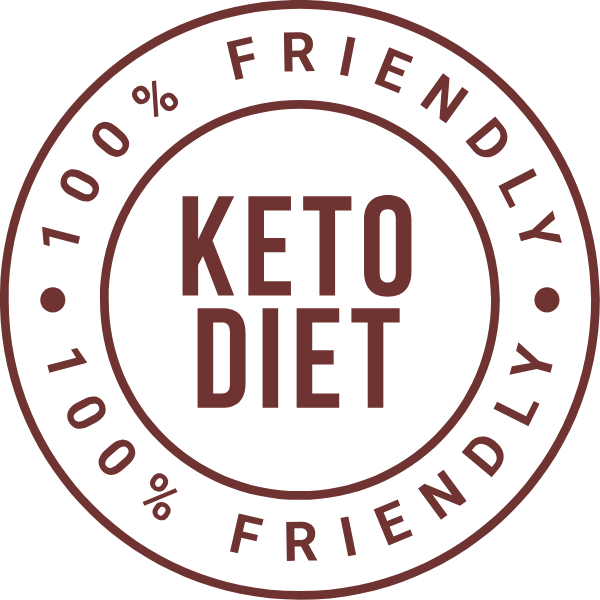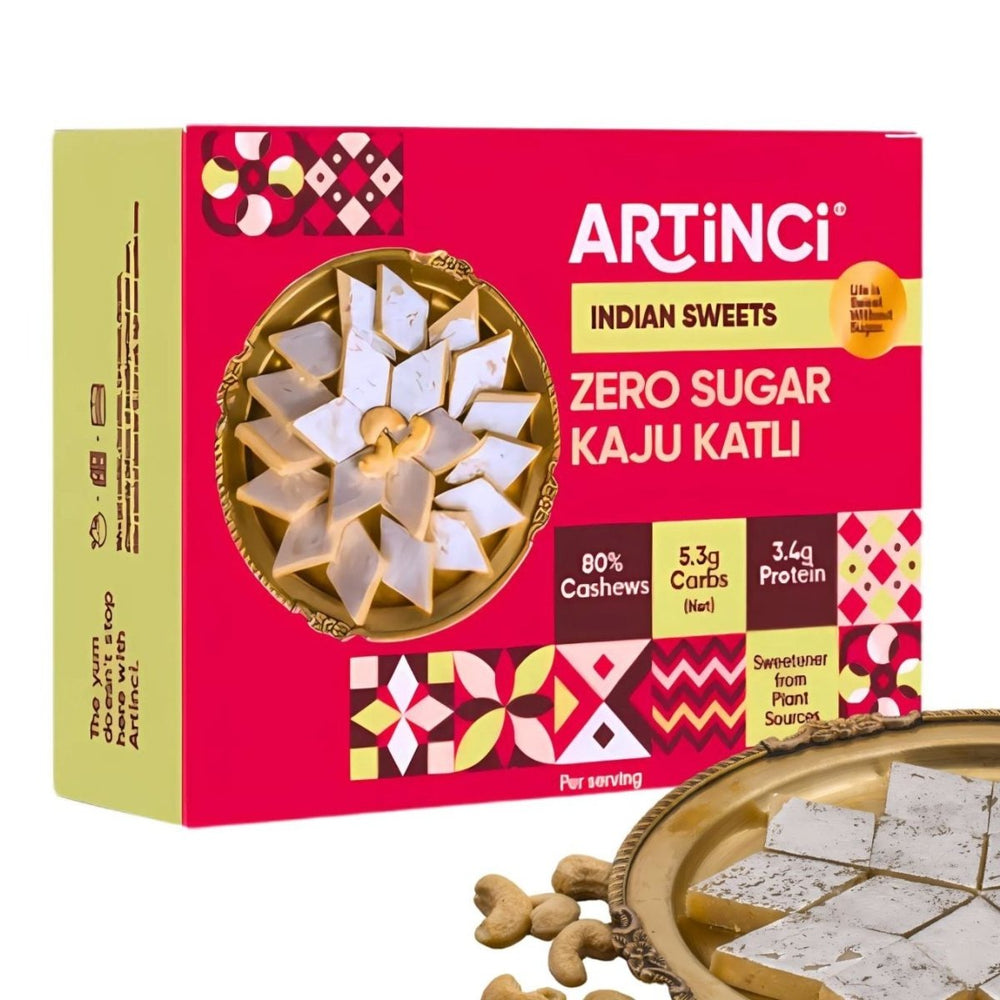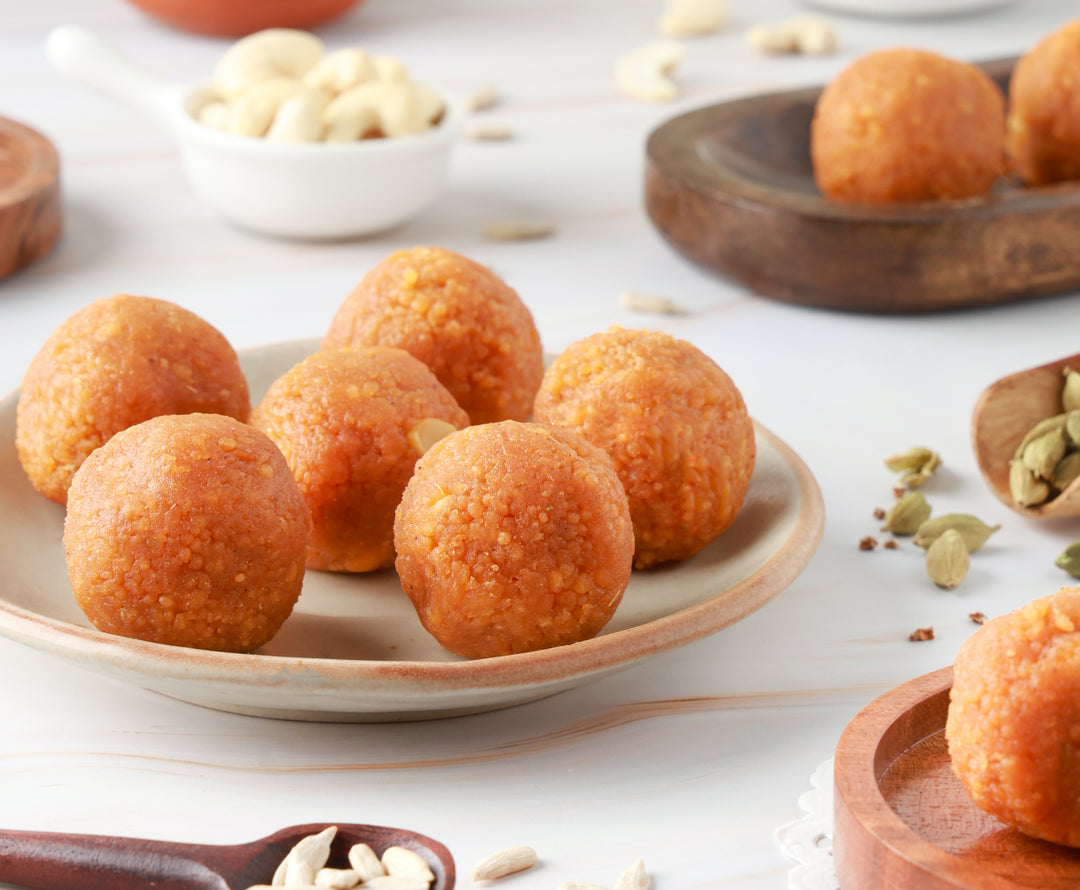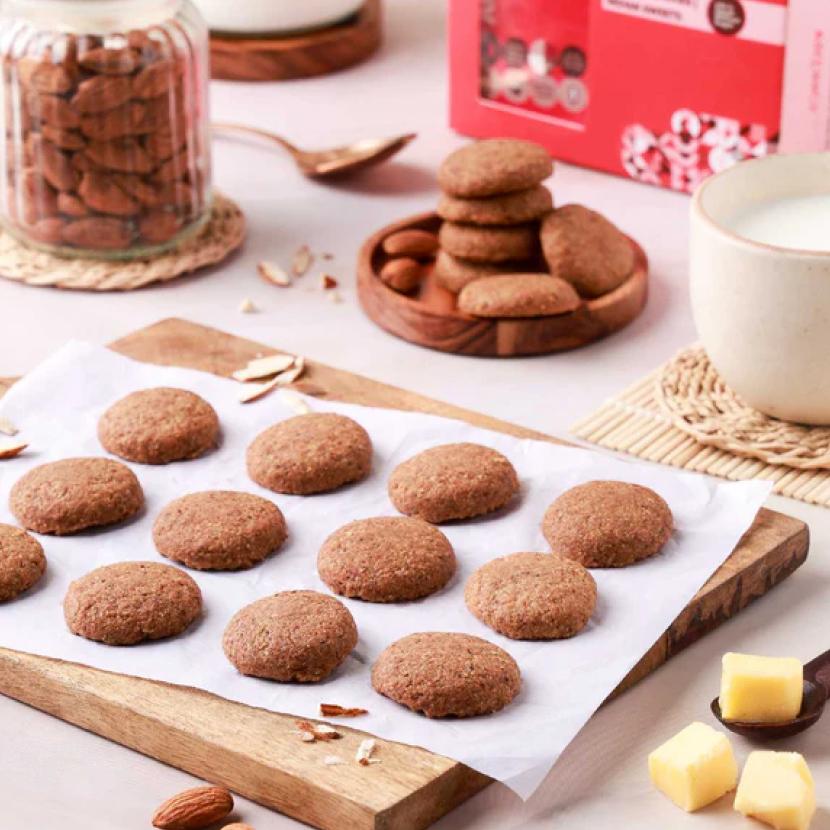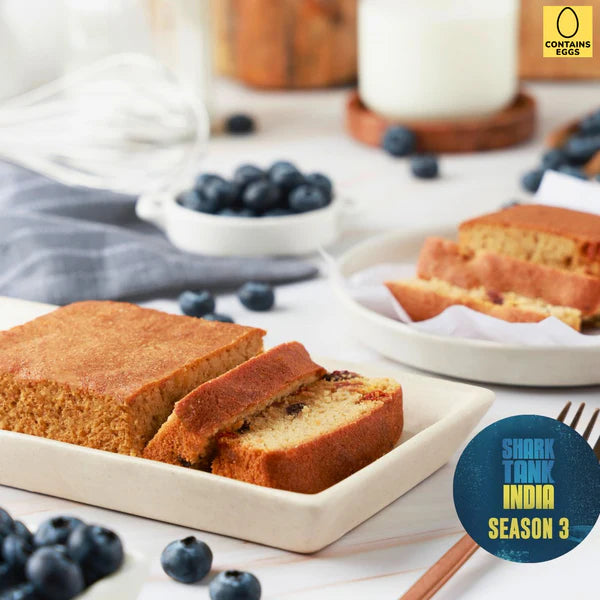Welcome to the world of sugar free joy!
Low Carb Sugar-Free Desserts & Snacks
Artinci was born out of Aarti's and Sumit's (Artinci's founders) abiding love for great-tasting dessert, while helping them stay committed to their health goals as well. As a result, Artinci makes delicious desserts with zero sugar, that are science and evidence-backed.
Aarti and Sumit come from a family of three generations of diabetics. They were themselves diagnosed pre-diabetic in 2012, and right there began a lifelong quest of a healthy, active lifestyle, including healthy swaps in food
Indulgent Halwas & Cozy Cakes


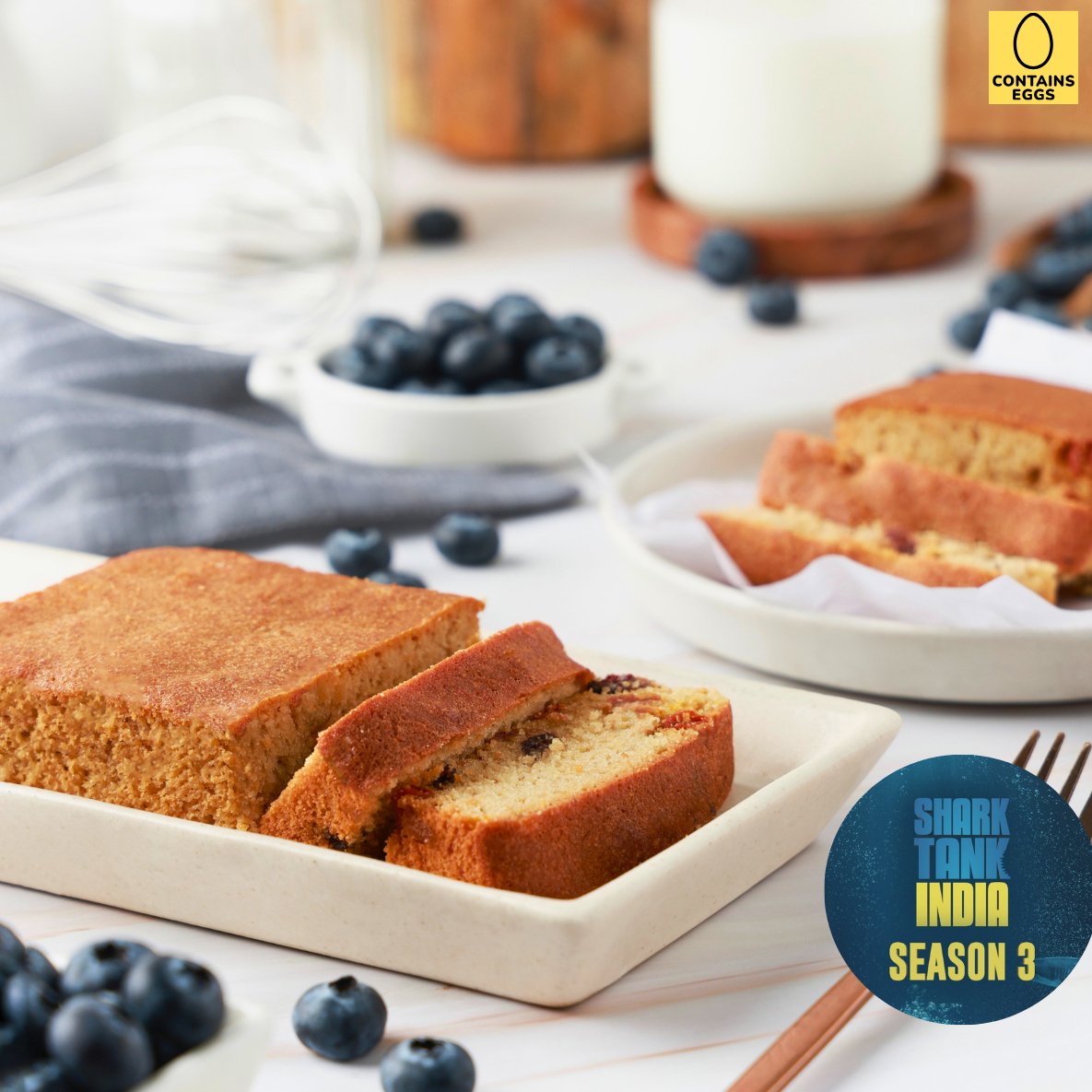
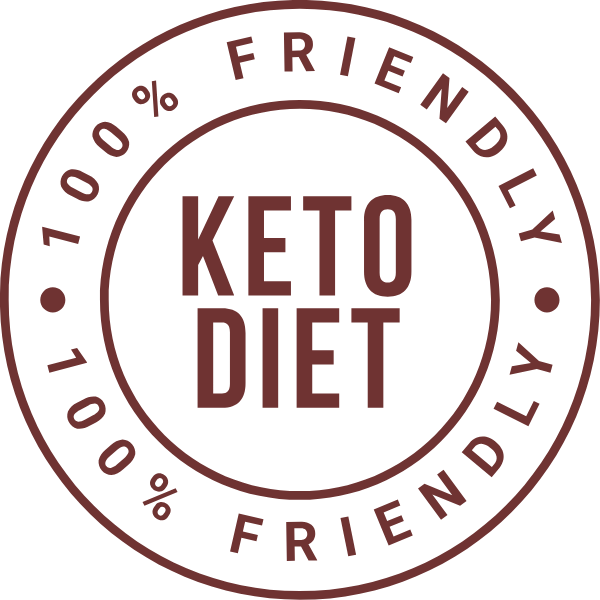

Berries Almond Cake - Made with 100% Almond Flour, Sugar Free, Keto, Gluten Free



Winter special sugar free halwa combo @499



Aarti Laxman (Founder)
Artinci is founded by Aarti Laxman, a certified Metabolic coach in the Low-Carb Nutrition & Metabolic Health domain from dLife.in, India’s only legally tenable course in this subject—recognized by the NSDC (under the Ministry of Skill Development & Entrepreneurship, Govt. of India). It’s also internationally accredited by the CPD Standards Office UK, with a global record of 144 CPD hours—the highest for any course of its kind. The accreditation is both nationally valid and globally recognised in over 50+ countries..
Festive Gifting in Artinci
Let customers speak for us
All about Sugar and sugar-free

Your body is like a high-performance machine - it needs premium fuel to operate at its peak. The food choices you make through healthy eating directly impact your energy levels, mental clarity, and physical performance. Just as champions prepare meticulously for success, Winners Fuel Right by making conscious nutrition decisions that power their journey.Think of your healthy eating plan as your personal success strategy. Each meal becomes an opportunity to nourish your body with the nutrients it needs to excel. When you fuel like a winner, you're not just eating - you're investing in your potential.A balanced diet, tailored to your unique goals and lifestyle, creates the foundation for sustained excellence. Whether you're crushing it at the gym, leading in the boardroom, or pursuing personal milestones, your nutrition choices can make the difference between average and exceptional performance.Moreover, when it comes to fueling your body right with healthy eating, it's not just about the meals you consume but also about making smart choices during festive seasons or celebrations. Artinci provides options like Kaju Katli and Motichoor Ladoo, which are perfect for gifting or indulging while still keeping health in mind.Lastly, remember that these dietary changes don't have to be a burden. With the right resources and products, you can easily manage your nutritional needs through healthy eating while still enjoying the food you love.The Science Behind Fueling Like a WinnerYour body operates like a high-performance machine, requiring specific nutrients to function at its peak. During exercise, muscle fibers experience microscopic tears - this damage triggers repair processes that build stronger, leaner muscles. Protein acts as the building blocks, while carbohydrates provide the energy needed for this reconstruction.A balanced intake of vitamins and minerals powers crucial bodily functions: B vitamins convert food into usable energy Iron carries oxygen to working muscles Calcium supports muscle contractions Vitamin D enhances muscle strength Magnesium aids in protein synthesis Sustained energy comes from strategic food choices. Your body breaks down complex carbohydrates slowly, maintaining steady blood sugar levels. This steady supply prevents energy crashes and keeps you performing at your best. Combining protein with carbs slows digestion, creating a lasting fuel source that powers you through demanding activities.However, not all carbohydrates are created equal. For instance, jaggery, often seen as a healthier alternative to sugar, can still pose challenges for those managing their blood sugar levels due to its high glycemic index. It's essential to choose low GI options, especially when considering sweeteners.In such cases, sugar-free products can be beneficial. They offer a way to satisfy sweet cravings without the associated spikes in blood sugar. For example, our Keto-friendly almond cookies are made with 100% almond flour and sweetened with low GI stevia, making them a perfect snack for those on a low-carb diet or managing diabetes.Remember, your body is unique and what works for one person may not work for another. Always consult with a healthcare professional before making significant changes to your diet or exercise routine.Building Blocks of a Healthy Eating PlanA winning nutrition strategy starts with understanding the essential building blocks of a healthy diet. Let's break down these vital components:Macronutrients - Your Body's Power Sources Carbohydrates (45-65% of daily calories): Focus on unrefined sources like quinoa, brown rice, sweet potatoes Proteins (10-35% of daily calories): Include lean meats, fish, legumes, tofu Healthy Fats (20-35% of daily calories): Choose avocados, nuts, olive oil, fatty fish Micronutrients - The Performance Optimizers Iron: Red meat, spinach, lentils Calcium: Dairy products, fortified plant milk, leafy greens B-vitamins: Whole grains, eggs, lean meats Antioxidants: Colorful fruits and vegetables Foundation Foods for Peak Performance Whole grain breads and cereals Fresh fruits and vegetables Lean proteins Low-fat dairy or fortified alternatives Nuts and seeds These nutrient-dense foods create a solid foundation for sustained energy, muscle recovery, and optimal health. A balanced combination ensures your body receives all necessary nutrients for peak performance.However, maintaining a healthy eating plan can sometimes be challenging due to various factors including cravings for sweets. This is where sugar-free options come into play. Incorporating sugar-free products into your diet can help satisfy your sweet tooth without derailing your health goals.For instance, our Almond Cake, which is keto and gluten-free while being sweetened with stevia, makes for a perfect guilt-free indulgence.Timing Your Meals for Maximum PerformanceStrategic meal timing can make or break your performance. A carbohydrate-rich breakfast kickstarts your metabolism and provides essential energy for morning workouts. Think oatmeal with banana, whole grain toast with eggs, or a smoothie bowl packed with fruits.Pre-Exercise Meal Guide: Large meals: 3-4 hours before (600-800 calories) Medium meals: 2-3 hours before (400-500 calories) Small snacks: 1-2 hours before (200-300 calories) While carbohydrates are essential, eating low-carb can also be a really smart idea depending on your fitness goals. For instance, if you're looking to lose weight or improve insulin sensitivity, reducing your carb intake might be beneficial.Post-Workout Recovery WindowThe 30-60 minutes after exercise is prime time for nutrient absorption. Your muscles are like sponges, ready to soak up glycogen and protein. A winning combination includes: 20-30g protein (chicken, fish, tofu) 40-60g carbohydrates (sweet potato, quinoa, rice) Light snack ideas: Greek yogurt with berries, protein shake with banana, tuna on whole grain crackers Remember: Your body performs best when fueled at the right times. Listen to your hunger cues and adjust portions based on workout intensity.If you're looking for delicious yet healthy post-workout snacks, consider trying our sugar-free Motichoor Ladoo made with pure desi ghee. They are perfect for any occasion and provide a great energy boost without the guilt of added sugar.Alternatively, our sugar-free coconut cookies could serve as an excellent snack option too. These diabetic-friendly treats are made with real coconut and sweetened with a natural low-glycemic stevia blend, making them ideal for those following a keto diet or managing their sugar intake. Incorporate these meal timing strategies and healthy snack options into your routine for optimal performance and recovery.Hydration: The Unsung Hero of PerformanceYour body is 75% water - and every drop counts for peak performance. Proper hydration directly impacts: Mental focus and reaction time Body temperature regulation Nutrient transport to muscles Joint lubrication Waste removal Your daily water needs depend on several factors: Age: Adults need 2.5-3.5 liters daily Activity Level: Add 500-1000ml per hour of exercise Climate: Hot or humid conditions require 30-50% more intake Altitude: Higher elevations increase fluid requirements When to rely on sports drinksSports drinks become valuable during: Exercise lasting over 60 minutes High-intensity training sessions Hot weather workouts Competition days A simple hydration checkA simple hydration check: Your urine should be pale yellow. Dark yellow signals dehydration, while clear indicates overhydration. Listen to your body's thirst signals and drink water consistently throughout the day rather than large amounts at once.Special Considerations for Teen Athletes' Nutrition PlanTeen athletes have specific nutritional needs because their bodies are growing and they are also trying to perform well in sports. Compared to teens who don't play sports, these young athletes need 20-30% more calories to support: Building and repairing muscles Strengthening bones Going through natural growth spurts Performing at their best in sports If they don't get enough calories, it can lead to: Weaker muscles Poor bone development Delayed puberty Higher risk of injuries Less stamina A successful nutrition plan for teens includes these important parts:Foods Rich in Calcium Low-fat dairy products Leafy greens Fortified plant milk Sources of Iron Lean red meat Dark poultry meat Beans and lentils Quality Sources of Protein Greek yogurt Eggs Fish Lean meats Healthy Fats Avocados Nuts Olive oil Seeds In addition to these components, it's essential for teen athletes to be mindful of their sugar intake, especially with the rise of sugar-free products. These products can be an effective way to manage sugar consumption, whether for weight control or other health reasons. Game Day Nutrition Strategies to Fuel Like a WinnerYour game day performance starts with smart nutrition choices. Load up on carbohydrate-rich foods 3-4 hours before competition: Whole grain pasta with marinara sauce Brown rice with lean protein Fresh fruits and vegetables Whole grain bread or bagels Keep protein portions moderate - about the size of your palm. This helps maintain steady energy levels without weighing you down. Skip fatty foods and sugary snacks that can cause energy crashes.Post-game recovery nutrition is crucial within 30 minutes after competition: Greek yogurt with berries Turkey sandwich on whole grain bread Chocolate milk Banana with peanut butter These combinations replenish glycogen stores and provide proteins for muscle repair. Stay consistent with portions - eating too much can be as problematic as eating too little on game day.Supplements vs Whole Foods: What Winners ChooseSports supplements promise quick results, but they come with hidden risks. Many products contain undisclosed ingredients, potential contaminants, or excessive amounts of certain compounds that can harm your health.Common supplement risks include: Kidney and liver strain Dehydration from excessive protein intake Interactions with medications Inconsistent product quality Natural hydration through water and electrolyte-rich foods like bananas, oranges, and leafy greens provides safer, more sustainable benefits than salt tablets or artificial supplements.Whole foods pack a powerful nutritional punch that supplements can't match: Complete protein profiles from eggs, fish, and lean meats Complex carbohydrates from grains and vegetables Essential fatty acids from nuts, seeds, and avocados Naturally occurring vitamin and mineral combinations Champions build their foundation on real food - letting nature's perfect packages fuel their success.However, it's important to note that not all substitutes are harmful. For instance, erythritol, a sugar-free substitute, offers some benefits when used wisely. Understanding its risks and how it compares to other sweeteners can help you make informed choices.Creating Your Personalized Healthy Eating Plan to Fuel Like a WinnerYour unique lifestyle, fitness goals, and body composition demand a personalized nutrition approach. Start by tracking your current eating patterns for a week - notice your energy levels, hunger cues, and performance variations.Build Your Plate Like a Pro: Fill half with colorful vegetables and fruits Quarter your plate with lean proteins Add whole grains in the remaining quarter Include healthy fats through nuts, seeds, or oils Customize Your Plan: Morning exerciser? Prioritize carb-rich breakfasts Strength training focus? Increase protein portions Endurance athlete? Boost complex carbohydrates Recovery days? Maintain balanced portions with slight calorie reduction Remember: small, consistent changes create lasting results. Adjust portion sizes and food combinations based on your daily activity levels and performance goals. A personalized eating plan becomes second nature when you align it with your natural preferences and schedule.However, it's also essential to indulge in some guilt-free treats occasionally. For instance, you could consider adding some chocolate cake and protein ladoo into your diet. These options are sugar-free and diabetic-friendly, making them perfect for those following a keto-friendly diet.ConclusionYour journey to fueling like a winner starts with a single choice - the decision to nourish your body with purpose and intention. Every meal becomes an opportunity to enhance your performance, boost your energy, and unlock your full potential.Winners understand that food is more than just sustenance - it's the foundation of: Peak physical performance Mental clarity and focus Sustained energy throughout the day Faster recovery and adaptation Long-term health and vitality The path to optimal nutrition isn't about perfection. It's about making conscious decisions that align with your goals and lifestyle. Small, consistent improvements in your eating habits create powerful momentum toward success.Remember: Champions aren't born - they're built. Your nutrition choices shape not just your body, but your capacity to achieve greatness in every area of life. When you fuel like a winner, you: Train harder Recover faster Think clearer Perform better Live stronger Take control of your nutrition today. Choose foods that energize and strengthen you. Make every bite count. Because when you fuel like a winner, you set yourself up to win - in sports, in fitness, and in life. Fuel your performance and satisfy your cravings with Artinci’s sugar-free, nutritious treats—crafted for champions!Make your next bite a win: choose Artinci and power up your healthy lifestyle today. Your next meal is your next opportunity to fuel like a champion. Make it count.Disclaimer: The information provided in this article is for educational purposes only and should not be considered as medical advice. It is always recommended to consult with a healthcare professional or registered dietitian before making any significant changes to your diet. FAQs1.What is the connection between nutrition and performance in life and fitness?Nutrition plays a vital role in linking better choices to better performance in life, fitness, and energy. A balanced diet tailored to individual goals helps optimize energy levels, supports muscle growth and repair, and sustains overall health for peak physical and mental function.2.How does 'Winners Fuel Right' promote better performance through nutrition?'Winners Fuel Right' emphasizes making smarter food choices to optimize energy and health. By focusing on nutrient-dense foods, proper meal timing, hydration, and personalized eating plans, it helps individuals achieve sustained success in fitness and daily life activities.3.What are the key components of a healthy eating plan for optimal performance?A healthy eating plan includes balanced intake of carbohydrates (preferably unrefined like wholegrain breads and cereals), proteins, healthy fats, vitamins, and minerals. These building blocks support muscle growth, sustained energy, and overall well-being essential for better performance.4.Why is meal timing important for maximizing fitness performance?Meal timing impacts energy availability and recovery. Eating a carbohydrate-rich breakfast before morning workouts, timing large meals 3-4 hours before exercise, smaller snacks 1-3 hours prior, and consuming carbohydrate-protein combinations post-workout enhance energy levels and muscle recovery effectively.5.How does hydration influence physical and mental performance?Hydration is critical for maintaining both physical endurance and cognitive function. Water needs vary based on age, activity level, and environment. Proper hydration prevents fatigue and supports optimal body functions; sports drinks may be appropriate during prolonged or intense exercise sessions.

10 Delicious Sugar-Free Desserts You Can Make at Home
Creating sugar-free desserts at home opens up a world of delicious possibilities for health-conscious food lovers. Whether you're managing diabetes, reducing sugar intake, or simply seeking healthier alternatives, homemade sugar-free treats allow you to control ingredients while satisfying your sweet cravings.The secret lies in understanding alternative sweeteners - from natural options like monk fruit and stevia to sugar alcohols such as erythritol. These substitutes can transform traditional recipes into diabetic-friendly versions without sacrificing taste or texture.Making desserts at home gives you the power to: Customize sweetness levels to your preference Choose high-quality, wholesome ingredients Experiment with different sugar alternatives Create portion-controlled servings Adapt recipes for specific dietary needs Gone are the days when sugar-free meant tasteless. With the right ingredients and techniques, you can craft mouthwatering cakes, cookies, pies, and ice creams that rival their sugar-laden counterparts.Moreover, making these desserts at home gives you the opportunity to experiment with different sugar alternatives that not only cater to your health needs but also tantalize your taste buds.Sweetener Alternatives for Sugar-Free DessertsNatural and artificial sweeteners offer exciting possibilities for creating delicious sugar-free desserts. Here's a guide to popular alternatives:Natural Sweeteners: Monk Fruit Sweetener: Zero calories, perfect 1:1 sugar replacement Allulose: 90% fewer calories than sugar, browns beautifully in baking Coconut Sugar: Lower glycemic index, rich caramel notes Date-Based Sweeteners: Rich in minerals, adds natural moisture Artificial Options: Sucralose: Heat-stable for baking, 600 times sweeter than sugar Stevia: Plant-based, ideal for no-cook desserts. You can learn more about the science behind zero-sugar sweeteners like Stevia. Date-Based Sweetening Tips: Blend whole dates with warm water for a smooth paste Replace liquid sweeteners in recipes 1:1 with date paste Add extra moisture when using date powder Each sweetener brings unique properties to your diabetic-friendly desserts. It's worth noting that while sugar-free products have become more popular recently due to growing health concerns about sugar, they may not always be healthier than regular ones. Therefore, it's essential to experiment with combinations to achieve the perfect taste and texture.For instance, you might try monk fruit with allulose for baked goods, or date paste with stevia for raw treats.Popular Types of Sugar-Free Desserts You Can Make at HomeLet's explore four delightful categories of sugar-free desserts you can create in your kitchen:1. No-Bake CheesecakesThe beauty of no-bake cheesecakes lies in their simplicity and versatility. A sugar-free strawberry cheesecake combines cream cheese, fresh berries, and your chosen sweetener for a refreshing treat. The crust can be made from crushed nuts mixed with butter, creating a perfect foundation for the creamy filling.2. Cookies and CakesSugar-free baking opens up a world of possibilities: Vanilla Cake: Create a moist, tender crumb using almond flour and monk fruit sweetener Swiss Meringue Buttercream: Achieve silky smoothness by heating egg whites with sugar alternatives Peanut Butter Cookies: Mix natural peanut butter with sugar substitutes such as erythritol for chewy, satisfying treats 3. Pies and Alternative OptionsSugar-free pies don't compromise on taste. Try these variations: Classic Apple Pie: Use sugar alternatives and cinnamon to enhance natural fruit sweetness Keto-Friendly Crusts: Combine almond flour with butter for a flaky, low-carb base Gluten-Free Options: Experiment with coconut flour or ground nuts for diverse textures 4. Ice Creams and SorbetsCreate refreshing frozen desserts without added sugars: Base your ice cream on full-fat coconut milk for dairy-free options Blend frozen fruits with sweetener alternatives like stevia for quick sorbets Add natural flavor enhancers like vanilla extract or cocoa powder Each category offers endless possibilities for customization. The key lies in selecting high-quality ingredients and understanding how different sweeteners interact with other components. These sugar-free desserts prove that healthy alternatives can be just as indulgent as traditional treats.For those who want to indulge without guilt, consider trying out sugar free Kaju Katli or Almond cookies, which are deliciously gluten-free and diabetic-friendly!Ingredient Tips for Successful Sugar-Free DessertsCreating delicious sugar-free desserts requires careful ingredient selection to achieve the perfect taste and texture. Here are essential ingredients that make your sugar-free treats irresistible:1. High-Quality Unsweetened Dairy Products Full-fat cream cheese for rich, creamy textures Greek yogurt for moisture and protein boost Heavy cream for fluffy whipped toppings 2. Healthy Fats Avocado for silky chocolate mousses Coconut oil for stable room-temperature desserts Grass-fed butter for tender baked goods 3. Texture Enhancers Xanthan gum to prevent ice crystal formation Psyllium husk for binding in gluten-free recipes Ground nuts for structure and richness 4. Natural Flavor Boosters Pure vanilla extract Fresh citrus zest Unsweetened cocoa powder Ground cinnamon or nutmeg These ingredients work together to create desserts that rival their sugar-laden counterparts. The right combination ensures your treats maintain the desired consistency while delivering satisfying sweetness through natural alternatives.However, achieving this perfect blend can be a challenge without understanding the science behind what replaces sugar in sugar-free products.For those seeking convenience, consider exploring Artinci's range of sugar-free, diabetic-friendly sweets which have been featured on Shark Tank. Our Almond cake & Berries cake combo is a notable mention, providing delicious gluten-free almond cakes that are also sugar-free.Baking Tips for Perfect Sugar-Free Dessert OutcomesAchieving perfect sugar-free desserts requires specific baking techniques. Preheating your oven properly is essential - allow at least 15 minutes for the oven to reach the desired temperature before baking.Here are key techniques for sugar-free baking success: Check your oven's temperature accuracy with a thermometer Position racks in the center for even heat distribution Rotate pans halfway through baking time Use light-colored baking pans to prevent over-browning Line pans with parchment paper to prevent sticking Test doneness with a toothpick 5 minutes before recommended time Allow baked goods to cool completely before frosting or storing Sugar substitutes often bake faster than traditional sugar, so watch your desserts carefully during the last few minutes of baking time to prevent burning.If you're looking for a delightful sugar-free treat, consider trying our sugar-free Motichoor Ladoo, made with pure desi ghee and no added sugar, perfect for any occasion.Recipe Examples of Delicious Sugar-Free Desserts You Can Try Today!Sugar-Free Vanilla Cake 2 cups almond flour 1 cup monk fruit sweetener 4 large eggs 1/2 cup unsalted butter 1/4 cup unsweetened almond milk 2 tsp vanilla extract 2 tsp baking powder 1/4 tsp salt Mix dry ingredients in one bowl, wet in another. Combine until smooth. Bake at 350°F for 25-30 minutes. Top with sugar-free buttercream frosting. For a convenient option, you can also try our sugar-free almond flour cake which is keto, gluten-free and diabetic-friendly.No-Bake Strawberry Cheesecake 16 oz cream cheese 1 cup powdered erythritol 1 cup heavy cream 2 cups fresh strawberries 1 tbsp gelatin Almond flour crust (or use a sugar-free graham cracker crust) Blend cream cheese with sweetener. Whip heavy cream separately. Fold together. Pour over crust. Refrigerate for 4 hours. Top with fresh strawberry puree.3-Ingredient Peanut Butter Cookies 1 cup natural peanut butter 1/3 cup stevia blend 1 large egg Preheat oven to 325°F. Mix ingredients until combined. Roll into 12 balls. Press with fork in criss-cross pattern. Bake for 12-15 minutes. Pro Tips: Room temperature ingredients create better texture. Let cookies cool completely before handling. Store in airtight container up to 5 days. Freeze cheesecake for up to 3 months. Use parchment paper for easy cake removal. These sugar-free recipes deliver classic dessert flavors without compromising taste. Each recipe uses readily available ingredients and simple preparation methods for foolproof results.If you're looking for more delicious options that fit into a sugar-free lifestyle, consider checking out our best sellers from a range of cakes, cookies, chocolates and more on Artinci. Health Considerations When Enjoying Sugar-Free DessertsNatural sweeteners like monk fruit or those found in products such as sugar-free coconut cookies, offer a healthier alternative to traditional sugar, making desserts accessible for those managing diabetes or watching their blood sugar levels. These alternatives provide sweetness without the caloric impact or blood glucose spikes associated with regular sugar.Key Health Benefits: Zero impact on blood sugar levels No artificial ingredients or chemicals Contains antioxidants that support immune health Suitable for ketogenic and low-carb diets Helps reduce overall sugar consumption Remember to listen to your body when trying new sweeteners. Some people might experience digestive sensitivity to certain sugar alternatives. Start with small portions and adjust serving sizes based on your individual tolerance and dietary needs.Disclaimer: Always consult with a healthcare professional before making any significant dietary changes, especially if you have underlying health conditions or are taking medication. While sugar-free desserts can be a great option for many, individual responses to sugar alternatives may vary.FAQs1.How can I make sugar-free desserts at home?Making sugar-free desserts at home involves using alternative sweeteners like monk fruit sweetener, allulose, or date-based sweeteners to replace added sugars. Focus on incorporating natural and artificial sugar substitutes in your recipes to create diabetic-friendly, delicious treats without compromising flavor.2.What are some popular sugar substitutes for homemade sugar-free desserts?Popular sugar substitutes include monk fruit sweetener, sucralose, allulose, coconut sugar, and date-based sweeteners. These alternatives help create healthier desserts that are suitable for diabetics and those seeking low-carb options.3.What types of sugar-free desserts can I easily make at home?You can make a variety of sugar-free desserts at home such as no-bake cheesecakes (like strawberry cheesecake), peanut butter cookies, moist vanilla cakes with Swiss meringue buttercream, no-sugar apple pies with keto-friendly crusts, and refreshing ice creams or sorbets using coconut milk or fresh fruits.4.What ingredient tips help improve the flavor and texture of sugar-free desserts?Using unsweetened dairy products along with healthy fats like avocado or coconut oil enhances the flavor and texture of sugar-free desserts. These ingredients complement alternative sweeteners and contribute to moistness and richness in your treats.5.Are there specific baking tips for achieving perfect sugar-free dessert outcomes?Yes! Proper baking techniques such as preheating the oven correctly are essential when working with sugar substitutes. Following precise measurements and baking times ensures your sugar-free desserts turn out moist and delicious every time.

Why Compromise is Strength: How to Choose Healthier Snacks
When you hear the word "compromise" in relation to food choices, what comes to mind? Many of us associate it with sacrifice, restriction, or giving up something we love. Let's flip this perspective – choosing health-first treats and no sugar snacks isn't about loss; it's about gaining strength, vitality, and control over our well-being.Selecting Healthier Snacks as Self-EmpowermentThink of selecting healthier snacks as an act of self-empowerment. Each time you reach for a sugar-free cookie or a nutrient-rich alternative like our Keto-friendly almond cookies, you're making a conscious decision to invest in your health. These choices create ripples of positive impact: Sustained energy throughout your day Better blood sugar control Improved mood stability Enhanced mental clarity Long-term health benefits The Impact of Snack Choices on HealthYour snack choices shape not just your present moment but your future health journey. By embracing health-first treats, you're not compromising – you're choosing strength. This mindset shift transforms every snack decision into an opportunity to nurture your body and mind.Understanding the Empowered Perspective on Snack ChoicesMany people view choosing healthier snacks as a form of deprivation - giving up the foods they love for less satisfying alternatives. This mindset creates unnecessary resistance and emotional strain around food choices.Let's reframe this perspective: Choosing rather than sacrificing Gaining health benefits instead of losing enjoyment Empowering yourself through informed decisions When you select a sugar-free cake, you're not compromising - you're making an empowered choice that aligns with your wellbeing goals. This shift in perspective transforms "I can't have that" into "I choose this."Self-control isn't about restriction - it's about liberation. Each mindful snack choice strengthens your ability to: Make decisions that serve your long-term health Break free from impulsive eating patterns Build sustainable healthy habits Research shows people who view healthy eating as a positive choice rather than a sacrifice experience: Greater satisfaction with their food choices Reduced feelings of deprivation Improved long-term adherence to healthy eating habits This empowered perspective puts you in control of your snacking decisions, creating a positive relationship with food that supports both physical health and emotional wellbeing.Incorporating more fiber into your diet can be particularly beneficial, especially during periods like Ramadan when managing diabetes becomes crucial. Here are some surprising ways fiber can support diabetes control.Moreover, adopting a low-carb diet can be a really smart idea for your overall health.The Science Behind Making Healthier Snack ChoicesResearch from the Journal of Consumer Research reveals a direct link between clear nutritional labeling and improved snack choices. When consumers understand what's in their food, they make smarter decisions. A study tracking 2,500 participants showed a 23% reduction in high-calorie snack purchases when detailed nutritional information was prominently displayed.Here's what science tells us about informed snacking: Blood Sugar Control: Conscious snack choices help maintain steady blood glucose levels, reducing energy crashes and mood swings. This is particularly important when considering the impact of sugar on our health. For instance, understanding more about sugar-free substitutes like erythritol can help consumers make better choices. Appetite Regulation: Nutrient-dense snacks increase satiety, leading to better portion control throughout the day Metabolic Benefits: Research indicates that selecting low-glycemic snacks can boost metabolism by up to 10% The numbers speak for themselves: People who read food labels consume 200-300 fewer calories daily Sodium intake decreases by approximately 400mg when nutritional information guides choices Regular label readers maintain healthier body weights long-term A groundbreaking study in Preventive Medicine demonstrated that individuals who consistently check nutrition facts are twice as likely to meet their daily nutritional requirements. These findings reinforce the power of knowledge in making health-conscious decisions.The brain's reward centers actually adapt to healthier choices over time. Neuroimaging studies show increased activation in pleasure-related areas when consuming nutritious snacks after consistent healthy eating patterns.Lastly, it's vital to note that not all sugar substitutes are created equal. Understanding the science behind zero-sugar sweeteners can provide valuable insights into their effects on health and metabolism.Exploring Health-First Treats: Examples and BenefitsHealth-first treats offer delicious alternatives that nourish both body and mind. Let's explore some popular categories:Sugar-Free Delights Dark chocolate with stevia Almond flour cookies Berry-based desserts Natural peanut butter cups Low-Carb Favorites Cheese crisps Zucchini chips Coconut clusters Keto-friendly bars These alternatives pack powerful benefits beyond simple calorie reduction. Sugar-free treats help stabilize blood sugar levels, reducing energy crashes and mood swings. Low-carb snacks support sustained energy release while keeping insulin levels balanced.The mental benefits shine through as well. Choosing health-first treats creates a positive relationship with food, reducing guilt and anxiety around snacking. These alternatives allow you to enjoy sweet moments while honoring your body's needs.Many health-first treats offer bonus nutrition. For instance, almond flour cookies provide protein and healthy fats, while berry-based desserts deliver antioxidants. Dark chocolate contains flavonoids that support heart health and cognitive function.Your taste buds adapt quickly to these better choices. Many people report enhanced taste sensitivity after reducing processed sugars, leading to greater appreciation of natural sweetness in fruits and other whole foods.The Role of Food Parenting Practices in Fostering Healthy Snack HabitsStructured food parenting creates lasting impacts on children's snacking preferences. Parents who model healthy eating behaviors naturally inspire their children to make similar choices. Research shows children are 3x more likely to choose nutritious snacks when they regularly see their parents enjoying these options.Here's what effective food parenting looks like in practice: Keep healthy snacks visible and accessible Create positive associations with nutritious foods Involve kids in grocery shopping and meal prep, which not only helps them learn about food but also fosters a sense of responsibility Avoid using treats as rewards or punishment The same principles work for adults learning to reshape their snacking habits. A structured approach to snack choices - like pre-portioning healthy chips or keeping cut vegetables ready - makes nutritious options the easy default.Parents can transform their home food environment by: Stocking kitchen counters with fresh fruit Storing processed snacks out of sight Making homemade versions of favorite treats Setting regular snack times These intentional practices build natural preferences for wholesome foods that last well beyond childhood.When it comes to snack options, parents can opt for healthier alternatives like sugar-free Motichoor Ladoo made with pure ghee, or sugar-free coconut cookies which are diabetic-friendly and keto-friendly. These options not only cater to health needs but also align with a sustainable lifestyle, proving that we can indulge in delicious treats while still being mindful of our health and the environment.Practical Tips for Embracing a Health-First Snacking MindsetMaking healthier snack choices becomes second nature with these practical strategies:Plan Your Snacks: Keep a stash of pre-portioned healthy snacks in your bag, car, or desk drawer. This prevents impulsive choices when hunger strikes.Master Label Reading: Check serving sizes first Look for added sugars Compare sodium content Identify hidden unhealthy fats Practice Portion Control: Use small containers Pre-measure snacks Avoid eating straight from packages Create Smart Combinations: Pair protein with fiber Mix textures for satisfaction Balance sweet and savory These delicious treats are perfect for those following a keto or diabetic-friendly diet. Strategic Shopping: Shop with a list Avoid hunger shopping Stay in perimeter aisles Choose whole food options These habits transform snacking from mindless munching into intentional nourishment. Your body recognizes quality fuel, responding with sustained energy and improved focus throughout the day.ConclusionChoosing health-first treats isn't about restriction - it's about empowerment. Each mindful snack choice represents a step toward better well-being and demonstrates your commitment to self-care. You're not giving up anything; you're gaining control, energy, and vitality.Remember: Your food choices shape your health story. By embracing nutritious alternatives and viewing them through a lens of strength rather than sacrifice, you create lasting positive changes. This mindset shift transforms simple snacking decisions into powerful acts of self-love.You hold the power to make choices that serve your well-being. Let each health-conscious snack selection be a reminder of your strength, wisdom, and dedication to living your best life.In addition to making healthier food choices, incorporating technology like smart scales and wearables can further enhance your journey towards better health. These tools help you manage aspects of your health beyond just weight loss, providing valuable insights that can assist in conditions such as diabetes. Disclaimer: The information provided in this article is for informational purposes only and should not be considered as medical advice. It is always recommended to consult with a healthcare professional before making any significant changes to your diet or exercise routine.FAQs1.What does it mean to reframe 'compromise' as a strength in choosing health-first treats?Reframing 'compromise' as a strength involves viewing the choice of health-first treats over indulgent snacks not as a sad sacrifice, but as a smart and empowering decision that prioritizes well-being and long-term health benefits.2.How can adopting an empowered perspective change my mindset about snack choices?Shifting to an empowered perspective means replacing negative views of compromise with positive ones, recognizing self-control and prioritizing your health. This mindset helps you see choosing sugar-free or low-calorie snacks as a proactive step towards better well-being rather than deprivation.3.What role does food labeling play in making healthier snack decisions?Clear nutritional information on food labels enables informed choices by highlighting calorie content, sodium levels, and sugar presence. Understanding these details helps individuals select healthier snacks that align with their health goals, such as sugar-free cookies or low-carb options.4.Can you provide examples of health-first treats and their benefits?Health-first treats include sugar-free snacks, low-calorie options, and low-carb snacks like sugar-free cookies and healthy chips. These treats support both physical and mental well-being by reducing sugar intake, managing calorie consumption, and promoting sustained energy levels.5.How do food parenting practices influence healthy snacking habits in children?Structured food parenting practices, like modeling healthy eating and offering nutritious foods consistently, help children develop preferences for wholesome snacks. This intentional approach fosters lifelong habits that prioritize health and empower better snack choices.

Why Do Some Marathon Runners Stay Slim While Others Are Heavier?
When you look at the starting line of a marathon, you'll see something interesting - the runners come in all shapes and sizes. While many have the typical lean physique we associate with distance runners, others have fuller, more muscular builds. This diversity can be influenced by various factors, including each runner's unique marathon runners diet. This diversity challenges our ideas about what a "real" marathon runner should look like. The truth? Marathon running attracts individuals with different body types, each bringing their own physical qualities to the sport. The question "Why do some marathon runners stay slim while others carry more weight?" sparks important conversations about body diversity in endurance sports. Let's explore the science, training approaches, and individual factors that create this rich tapestry of runner physiques - proving that successful marathon runners come in all shapes and sizes. While it's easy to think that weight differences are only due to genetics or training methods, lifestyle choices like diet also play a crucial role. For example, some marathon runners may follow a low-carb diet, which can greatly impact their body composition and performance. But nutrition isn't just about carbs; it includes various food choices such as sweets and snacks. For those who enjoy sugary treats, indulging in options like Kaju Katli or Almond cookies can be guilt-free if they're mindful of their dietary needs. For instance, Kaju Katli offers a sugar-free option that's diabetic-friendly and perfect for those following keto diets. Understanding Body Type Diversity in Marathon Runners Your genetic makeup plays a significant role in determining your natural running physique. The three primary body types shape how runners store fat and build muscle: 1. Ectomorph Naturally lean and long-limbed Fast metabolism Difficulty gaining muscle mass Often seen in elite marathon runners 2. Mesomorph Athletic, muscular build Balanced metabolism Responsive to strength training Common among versatile runners 3. Endomorph Broader frame and shorter limbs Slower metabolism Higher tendency to store fat Natural strength advantages These inherent differences explain why two runners following identical training plans might maintain different physiques. An endomorph runner might carry more body fat despite rigorous training, while an ectomorph naturally maintains a leaner appearance with minimal effort. Your body type influences: Fat distribution patterns Muscle development response Base metabolic rate Natural running economy Understanding your body type helps set realistic expectations and develop training strategies that work with your natural build rather than against it. However, maintaining the ideal weight for your body type can sometimes be challenging, especially for those who are Endomorphs. In such cases, dietary adjustments play a crucial role. Moreover, if you are looking for sugar-free, diabetic-friendly sweets, there are several options available that can cater to your dietary needs without compromising on taste. Training Habits and Their Impact on Runner Physique Marathon runners' training approaches significantly shape their physical appearance. Traditional endurance-focused training emphasizes long-distance runs, tempo sessions, and interval workouts - creating a lean physique with minimal muscle mass. This classic approach burns substantial calories while limiting muscle growth. Strength-inclusive training plans paint a different picture. Runners who incorporate regular resistance training develop: Increased muscle definition Higher bone density Enhanced power output Greater overall body mass A runner's chosen training style directly influences their body composition. Those following pure endurance programs often maintain lighter frames, while strength-integrated plans can add 5-15 pounds of functional muscle mass. The sweet spot lies in balancing performance goals with desired physique outcomes. Elite marathoners might choose minimal strength work to maintain speed, while recreational runners could embrace more comprehensive training approaches. Some athletes deliberately maintain higher muscle mass through: Regular weight training sessions Protein-rich nutrition plans, which are crucial for supporting muscle growth and recovery Targeted power exercises Cross-training activities These varied approaches demonstrate how training choices shape runners' bodies beyond basic endurance adaptations. However, maintaining a balanced marathon runners diet is equally crucial in achieving desired physique outcomes. For instance, incorporating sugar-free sweeteners into one's marathon runners diet can help in managing calorie intake without compromising on taste. Products like those from Artinci, which offer guilt-free sweet treats such as almond cakes that are both gluten-free and sugar-free, can be beneficial for runners seeking to satisfy their cravings without deviating from their health goals. While training habits play a significant role in shaping a runner's physique, it's essential to recognize the impact of nutritional choices as well. Balancing these two aspects—training and a well-planned marathon runners diet—can lead to optimal performance and desired body composition. The Role of Nutrition in Marathon Runner Body Composition Marathon runners' body composition reflects their unique nutritional choices and strategies. A typical marathon nutrition plan includes: Carbohydrate-rich foods (60-70% of total calories) Lean proteins (15-20% of total calories) Healthy fats (20-30% of total calories) However, body composition changes extend beyond simple calorie math. Factors like nutrient timing, meal frequency, and food quality play crucial roles in how the body stores or burns fat, builds muscle, and maintains energy levels. Some runners fall into restrictive eating patterns, believing less food equals better performance. This approach can lead to: Decreased bone density Hormonal imbalances Reduced muscle mass Compromised immune function A balanced nutrition approach supports both performance and health through: Regular fueling throughout training Adequate protein for muscle repair Essential fats for hormone production Micronutrients for recovery and immunity Ultra marathon runners often require additional calories and specific nutrition timing strategies, with some consuming up to 6,000 calories daily during peak training periods. In this context, the right choice of sugar substitutes can be beneficial. For instance, erythritol is a sugar-free substitute that offers several advantages over traditional sugar. Moreover, incorporating healthier options such as sugar-free Motichoor Ladoo, which are made with pure ghee and no added sugar, could also be a delicious part of a balanced diet. Similarly, sugar-free coconut cookies, which are diabetic-friendly and made with real coconut, could serve as a healthy snack option for runners. Health Versus Appearance: What Defines a Healthy Marathon Runner? The misconception that a lean physique automatically equals peak health has led many runners down dangerous paths. Research shows that runners at varying weights can achieve remarkable athletic performance while maintaining excellent health markers. Consider these eye-opening facts: Athletes with higher body fat percentages often demonstrate superior endurance and recovery abilities A study of elite runners revealed that those with more muscle mass experienced fewer injuries Many top-performing marathon runners maintain a robust, athletic build rather than an ultra-lean appearance The fixation on achieving an extremely slim physique can mask serious health issues such as decreased bone density, compromised immune function, hormonal imbalances, and reduced power output during races. The true measure of a healthy marathon runner lies in: Consistent performance improvements Quick recovery between training sessions Stable energy levels throughout the day Regular menstrual cycles for female athletes Mental well-being and positive relationship with food The Role of Nutrition in Marathon Training Nutrition plays a crucial role in maintaining the health and performance of marathon runners. It's important to focus on healthy eating habits, which can include incorporating sugar-free products into your diet for better health outcomes. For instance, opting for Keto-friendly almond cookies or an almond flour cake can provide necessary nutrients without compromising your dietary goals. Ultimately, the journey to becoming a healthier marathon runner should not be defined by societal standards of appearance but rather by personal health markers and performance metrics. This perspective is supported by recent studies emphasizing that focusing solely on weight can lead to detrimental effects on both physical and mental health. Instead, adopting a holistic approach that includes proper nutrition and understanding one's unique body composition can pave the way for sustainable success in marathon running. Individual Choices and Priorities Among Marathon Runners Marathon runners make deeply personal decisions about their training and lifestyle based on their unique goals and values. Some athletes prioritize achieving specific race times, dedicating themselves to strict training regimens and precise nutrition plans. Others focus on the pure enjoyment of running, maintaining a balanced lifestyle that includes social activities and diverse food choices. Personal values significantly influence these choices: Performance-focused runners might accept a leaner physique as a byproduct of their intensive training Lifestyle-oriented athletes often maintain fuller figures while still completing marathons successfully Health-conscious runners balance weight management with sustainable, long-term wellness goals Many successful marathon runners embrace their natural body types, refusing to compromise their physical or mental health for aesthetic ideals. These athletes demonstrate that marathon success isn't tied to a specific body type - it's about finding an approach that aligns with individual goals and values. The running community now celebrates this diversity in approaches, recognizing that each runner's journey reflects their personal priorities and life circumstances. This acceptance creates space for athletes to make choices that serve their unique needs and aspirations. Conclusion Marathon running celebrates the incredible diversity of human bodies and their capabilities. A healthy runner's physique isn't defined by a number on the scale or a specific body shape - it's measured by strength, endurance, and dedication to the sport. Your marathon journey deserves to be about personal achievement, not conforming to outdated aesthetic ideals. Each runner's path is unique, shaped by: Individual genetic makeup Personal performance goals Sustainable training approaches Long-term health priorities The true spirit of marathon running lies in pushing your own limits, respecting your body's natural tendencies, and finding joy in the journey. Whether you're naturally lean or carry a fuller figure, your worth as an athlete is defined by your determination, resilience, and passion for running. Fuel your marathon journey with Artinci’s sugar free desserts—crafted to satisfy your sweet tooth while supporting your unique dietary needs. Whether you’re training hard or celebrating a personal best, indulge guilt-free and nourish your body the delicious way. Try Artinci today and enjoy desserts that love you back! Disclaimer: The information provided in this article is for educational and informational purposes only and should not be construed as professional advice. Please consult with a healthcare professional or certified trainer before starting any new exercise program or making changes to your diet. FAQs 1.Why do some marathon runners appear slim while others look heavier or almost fat? Marathon runners exhibit diverse body types due to natural differences such as ectomorph, mesomorph, and endomorph builds. These variations influence fat storage and muscle mass, making some runners naturally lean while others have a fuller physique despite similar training. 2.How do different training habits affect the physique of marathon runners? Training plans that focus solely on endurance tend to produce leaner physiques, whereas incorporating strength training can lead to more muscular or bulkier appearances. Balancing endurance and strength training helps runners maintain performance while shaping their desired body composition. 3.What role does nutrition play in the body composition of marathon runners? Nutrition strategies for marathon runners go beyond calorie intake; balanced diets support energy needs and muscle development. Overly restrictive eating can cause unhealthy leanness, so maintaining a balanced nutrition plan is vital for both performance and overall health. 4.Is being extremely slim a reliable indicator of a healthy marathon runner? No, extreme leanness does not necessarily equate to health. Heavier runners may be stronger and healthier, and equating low body weight with athletic success is misleading. Fitness should be assessed by overall health and performance rather than appearance alone. 5.How are cultural perceptions around marathon runner bodies changing? There is a shift from the traditional 'skinny' ideal towards embracing stronger, curvier athletes. This change positively impacts female athlete representation and encourages body positivity, influencing runner self-image and fostering supportive running communities.






